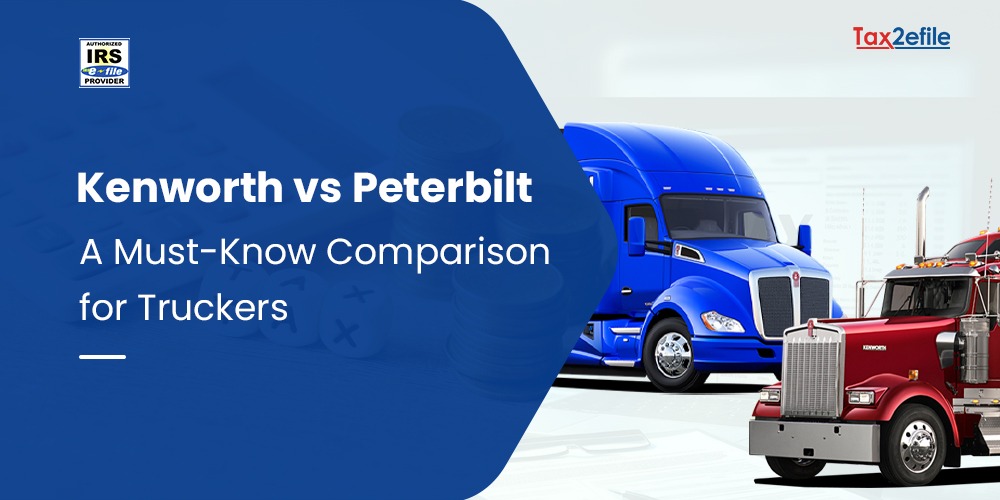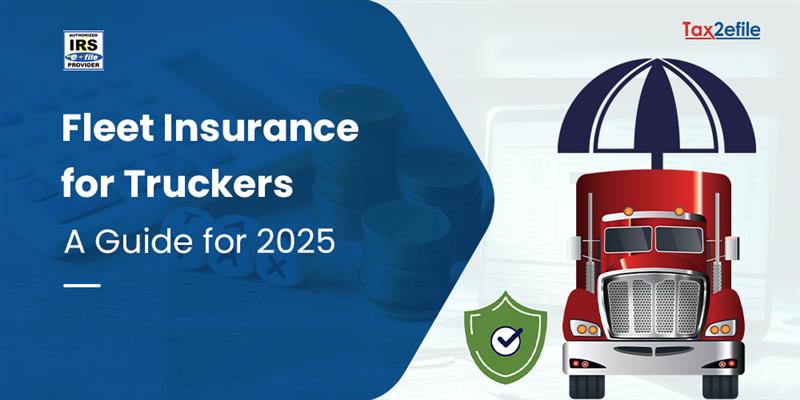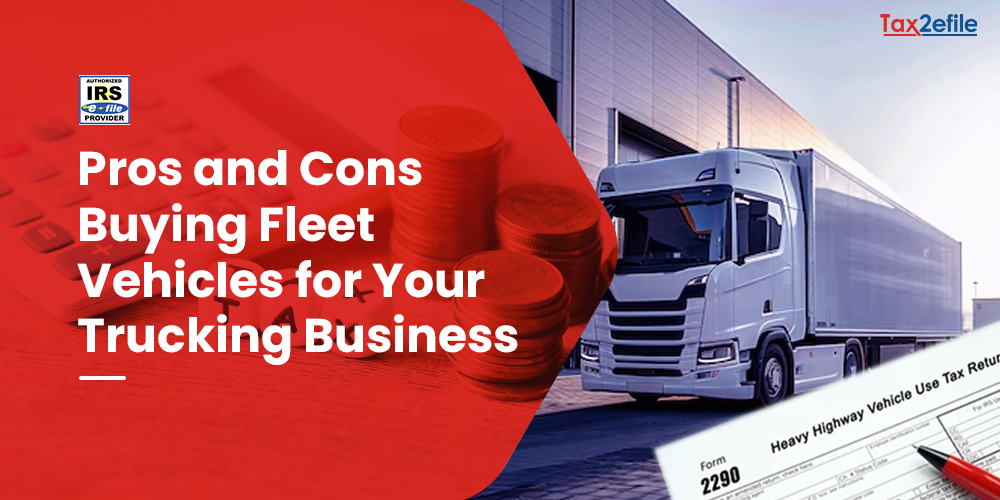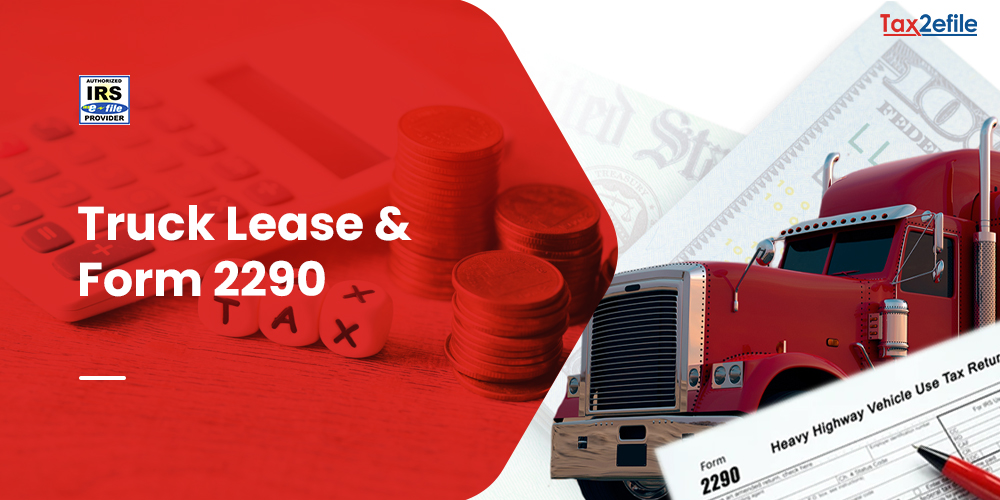- October 21, 2025

In the world of the American trucking industry, Kenworth and Peterbilt are both familiar names among the truckers. These are two legendary brands under PACCAR Inc., reputed for producing the most reliable, powerful, and efficient heavy-duty trucks on the road. Even though both have the same engineering and excellent dealership support, there is a difference between by design philosophies, cost of ownership, and brand prestige.
Truckers often have the thought, Which one is better for me? For every trucker, selecting a semi-truck is a high-stakes business decision that impacts everything from fuel costs and driver retention to your annual Heavy Vehicle Use Tax (HVUT) filing. This is a key comparison that helps you choose the right one in terms of comfort, performance, price, and resale value.
Table of Contents
Brand Overview: Same Parent, Different Personality
Both companies have been associated with American transportation for a century.
Kenworth
People like Kenworth because they’re built tough, engineered well, get good mileage, and have designs that cut through the air. The W900 and T680 are popular models for fleets and long-haul trips. Kenworth focuses on being efficient and practical, with designs that help save fuel and keep trucks on the road. When you add up all the costs, Kenworth usually comes out a bit ahead because its T680 is so aerodynamic. Kenworth cabs are also really strong and made to be comfortable. They’re designed to be easy to use and help drivers stay alert on long drives, with modern screens and controls.
Peterbilt
Famous for its elegant interiors, owner-operator appeal, and antique chrome style. Truckers consider the Peterbilt 389 a practical icon among truckers. They are widely known for their attractive finishes, high-quality parts, and close diligence for both sleeper and cab, making them feel like they are living in grandeur while traveling. If you want style, to be able to customize your truck, and to have a ride that stands out, Peterbilt is the way to go.
How They Stack Up: Kenworth vs. Peterbilt
Here is how they often differ across various categories:
| Factor | Peterbilt Strengths | Kenworth Strengths | Notes |
|---|---|---|---|
| Styling & Brand Appeal | With chrome work, custom-look options, vintage stylistic cues, and a noticeable “road presence,” Peterbilt is often perceived as being more “premium.” | Kenworth typically focuses more on functional design, aerodynamics, and cost-efficiency. | Many drivers choose Peterbilt for looks and image; Kenworth often appeals more to fleet buyers. |
| Interior, Comfort & Ergonomics | High-end interiors, more comfort options, and more customization trimmed in luxury ways. | More “utilitarian” in base specs, but solid ergonomics, with modern packages available. | For long-haul drivers, small comfort differences matter. |
| Cost & Value / Total Cost of Ownership | Usually, the truck carries a premium resale value (thanks in partly due brand appeal). | Kenworth tends to be lower in upfront cost (for comparable specs), often has better aerodynamic efficiency (which helps fuel economy). | Over the life of the truck, the differences in maintenance, parts, fuel, and downtime may challenge the “premium” benefit. |
| Parts, Service & Dealer Networks | Fanatical support via PACCAR and dealer systems; high demand helps parts availability. | Similarly strong; depending on the region, one may have better local dealer coverage than the other. | For remote areas, your local dealer network is more important than the brand name. |
| Reliability & Durability | Particularly good reputation; many “Petes” last exceptionally long under good maintenance. | Equally compelling reputation: some argue Kenworth has an edge in rugged applications because of simpler design in some areas. | Individual truck build quality, maintenance, driver handling, and operating conditions often dominate brand-level differences. |
| Aerodynamics & Efficiency | Some modern Peterbilt models emphasize aerodynamic design (skirts, fairings, underbody, etc.). | Kenworth often gets credited with better aerodynamic efficiency and tighter design—this can favor fuel economy. | Fuel is a major operating cost — even a small advantage in aerodynamics can have a big fiscal impact over millions of miles. |
| Resale & Brand Loyalty | Peterbilt’s premium image helps hold resale value, especially among owner-operators who care about prestige. | Kenworth keeps decent resale, though there is some discount vs. Peterbilt. | Some discount vs Peterbilt. Resale also depends heavily on maintenance, mileage, and how well the truck was kept. |
| Special/Vocational Use (e.g., construction, heavy duty, off-road) | Peterbilt does have vocational models, but sometimes the added design touches may not justify the cost in harsh environments. | Kenworth’s vocational line (T800, etc.) is often praised for durability and practicality in harsher uses. | For strictly “workhorse” trucks, minimizing complexity is often beneficial. |
What Is Really Important: The Cost of Ownership
Evaluating the better truck, beyond the sticker price. We consider the fuel economy, maintenance and downtime, insurance and licensing, annual HVUT/IRS Form 2290 tax, and resale value. For long-haul operators, Kenworth’s aerodynamics save more on fuel. Meanwhile, Peterbilt’s trucks offer higher resale value, offsetting their premium purchase price for many independent drivers. Though both belong to the same parent company, their design philosophies differ. Peterbilt is known for prestige, comfort, and resale, preferred by owners and operators, while Kenworth is known for performance, cost efficiency, and uptime, preferred by fleet owners.
Both Kenworth and Peterbilt represent the highest standards of PACCAR engineering, regardless of the model that the user selects, depending on their needs and budget value.
| Category | Best Pick | Reason |
|---|---|---|
| Owner-Operators | Peterbilt | Comfort, customization, and resale |
| Fleet Operations | Kenworth | Efficiency, lower life cycle cost |
| Vocational/Heavy Work | Kenworth | Tougher for off-road conditions |
| Show Trucks/Custom Builds | Peterbilt | Premium look & brand prestige |
Choosing between Peterbilt and Kenworth is less about brand loyalty and more about your driving goals and operational costs.
For tax compliance, especially U.S. heavy-vehicle operations, using a reliable e-filing platform like Tax2Efile makes Form 2290 filing smoother, reduces errors, and helps you stay on the road legally. To drive smart, avoid IRS penalties, and return to the road faster, truckers can visit the Tax2efile web application.


